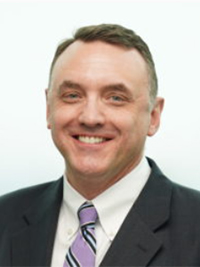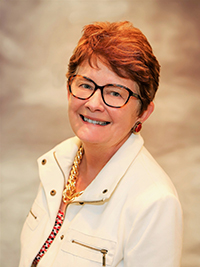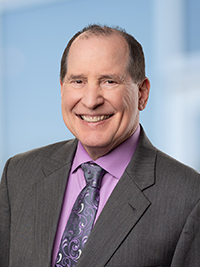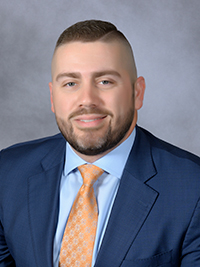Healthcare finance leaders share innovative approaches to pandemic challenges
Sponsored by Ziegler

As the current public health crisis continues to evolve, healthcare organizations are facing numerous challenges, not the least of which pertains to staffing. Recruitment and retention are harder than ever, and organizations are searching for ways to optimize their efforts while improving efficiencies and keeping costs in check. In this roundtable, sponsored by Ziegler, several senior financial leaders discuss how their organizations are handling new and persistent problems and what role technology plays in solving them.
How is your organization using technology, including artificial intelligence (AI), to attract and retain employees?
Maxwell Owens: Like many organizations, Astria Health is suffering with high staff turnover. Contract labor is costing about ten times what we had originally thought it would. We recently hired a staff nurse for $225 an hour. It’s unreal. We are looking at a variety of options to address the challenges, including short-, medium- and long-term strategies. For instance, we’re trying to put in a nurse residency program to bring in new nursing graduates, have them complete their rotation here and then hopefully fill open positions.
Chris Dooney: At CenterPointe, we’re dipping our toes in the AI pool, but we’re not using it to tackle employment issues right now. We’re using it more to help with revenue cycle optimization.
On the recruitment front, we’ve also done contracting with local universities and their nursing programs to set up mutually beneficial arrangements. This has helped us get the nursing skill set in the door.
What has surprised me is all the jobs that are now hard to fill, which haven’t been before. We’ve always had a surplus of applicants who we’ve had to turn away. But that’s not happening anymore. We’re seeing staffing shortages across almost every position. We thought that after the federal unemployment bonus went away in early September that we’d get a bunch of people coming back, and they just never did. It’s especially hard for those entry-level jobs where people can make more money at fast food places without the stress. Some of those places are paying more than $20 per hour.
To address this, we’ve invested more into compensation. We conducted a market review to make sure we aligned with the highest ranges. We’re also working with human resources to promote the entire compensation package — not just the salary piece — emphasizing benefits people might not get from other jobs, such as the fact that our health plan deductibles are really low compared to other places. We match well on 401(k), too.
Mike Blair: One thing we at CentraCare have learned is that not all of our employees are motivated by money. We’ve done a lot with compensation in the last 12 months, and our turnover rate remains around 20%. The people who are staying seem to be driven more by mission. So, how do we change what we’re doing from a retention standpoint, while still acknowledging that other companies outside of healthcare are paying more for positions with less stress and COVID risk? What are those unique things that will resonate with the staff? And will focusing on those help curb the turnover? For example, [providing] childcare or scholarships for education.
Marsha Morien: How can you know when you’re making changes, such as the ones you’ve described, whether those are going to work to recruit people back to the workforce or prevent them from leaving? Why aren’t the people you thought would apply coming back? Is it possible to use a tool like artificial intelligence to help understand the steps and strategies that might be good for the future?
Brian McGough: There are a lot of technology options out there, but it can be overwhelming to learn about them all, especially if you don’t have the bandwidth to explore the possibilities. For example, there’s some interesting AI solutions that address employee recruitment, retention and engagement. One that comes to mind — a solution provider called Arena — offers predictive analytics, collecting and analyzing data about an applicant’s personality, skill inventory, experience and so on. It uses the information to make predictions about an applicant’s turnover potential. In response to the skyrocketing labor shortage, the company is going back to some of its hospital clients, re-inventorying previous applicants that didn’t get hired and re-screening them for candidacy to see if they may fit with the roles that currently exist at the healthcare organization.
Miguel Vigo: I believe there can be more value in focusing on retention than recruitment right now. Going forward, using AI to capture a single source of truth on exit interviews and employee engagement surveys could be beneficial. However, given the speed and volume of turnover, investing in AI may not be a sustainable model.
Robert Condie: Granger is using a tool for staff engagement and retention. We’re texting employees a few times a month to ask about their well-being, the culture and what they’d like to see done differently. Sometimes we send a text message to simply say, “Hey, how are you doing? Thanks for working here.
Appreciate you.” We’re not necessarily looking for any feedback, but the outreach has helped. We have 2% unemployment in Salt Lake City, and we have to think creatively about how to keep people engaged and let them know we care. For our revenue cycle, accounting and population health staff, we’ve expanded our flexibility in terms of remote work and flexible schedules. It’s a relatively simple way for us to deliver a valued benefit.
McGough: Another solution that is partnering with hospitals — called Payactiv — eliminates the need for hospital employees to get a payday loan. This is great for your lower-wage employees like custodial, food service and housekeeping. It was started by a not-for-profit system in the South. And it allows employees to access their earned, but yet-to-be-paid wages through a debit card. The hospital systems that have deployed it have found it to be a fantastic retention tool. It’s just a couple of dollars a month. Sometimes the health system pays for it, sometimes the employees do.
Blair: We started using predictive analytics to identify the early red flags that tell us if an employee is likely to leave our organization. The challenge is that the pandemic has skewed the data. We have more people leaving to be [travel clinicians] for higher wages or leaving because they are burned out. So, we’ve moved away from that specific project for a bit.
Owens: We as healthcare organizations need to change our mindset and acknowledge that we’re not going to find nurses with 15 years of experience — or at least we’re not going to be able to do that easily and consistently. We’re going to have to create our own training programs and change our methodology to figure out the indicators that show whether an individual will be successful here. We also have to change the mindset of our managers, for instance, in nursing. Historically, the nursing staff have shied away from hiring new graduates. But if we do that, how are [the new nurses] ever going to get the education and training they need?
Morien: There’s a huge gap between education and actual practice, especially in a field like nursing. How do we provide support systems for that gap period of time? The key is making the new nurse feel supported and successful during that period. And there are probably models out there that have effectively breached this gap.
What about nonclinical employees? What are you doing to hire and retain those positions?
Owens: We’re in a hot market for finance and revenue cycle, and with everything being remote, we’re competing in a different environment than before. Accounting has been particularly difficult lately. I was able to hire three people in the last six months, but one has already quit. He wanted to be fully remote, and while we can be flexible, there are some instances where we need the staff to be in the facility. Laboratory technicians, physical therapists and speech therapists are in short supply as well.
McGough: Have any of you done any partnering with universities to get a better flow of non-clinical candidates? There are a few health systems that are assertively, even aggressively, partnering with a variety of different universities and associate’s programs to fill non-nursing slots. They’re creating their own university partnerships in a more direct way.
Vigo: We’re starting to make some headway in partnering with the universities and schools to help them understand what we are looking for. We’re not just providing them with a job description but actually having them attend a couple HFMA events and encourage their students to become revenue cycle certified. That sort of upstream work may pay off long term.
And I know it’s a little thing, but job titles matter, too. Other fields are using more attractive titles for jobs that are equivalent to what we need. We’re trying to work with human resources to retitle certain jobs, but we are limited as to how far we can go.
Condie: It’s those nonclinical positions, such as accountants, coders and billers, where you can put some AI behind the functions and become more efficient. With these kinds of systems, you’re doing more with fewer people. We’ve improved our reporting, so we can get information turned around faster and with less staff. This has allowed us to stop filling positions we don’t need and use those funds for other things.
Blair: You know the saying, “Don’t let a crisis go to waste.” We’re not going to be able to prevent front-line registration staff from leaving the organization for positions elsewhere. We have to change the process and the systems, increasing activities like online scheduling. We need to push along some of the advancements that we’ve all been talking about for years. Now’s the time because we know we’re going to lose staff as part of what’s going on across the industry. We’re not going to be able to replace these positions completely, so we better figure out a way to do things faster with less staff.
What technologies are you using to help staff be more efficient?
Blair: We’re starting to explore the idea of “hospital at home.” The reality is we can’t move our patients out of the hospital as quickly as we’d like because we have nowhere to discharge them to. We need to rethink that model. If there’s a safe way for us to get these patients out of the hospital and into their homes, we should be considering those options. It’s just like what we talked about earlier: The staffing crisis is not going away in six months; it’s going to be here for a while. So, we have to figure out a different approach. I believe the future is going to involve more remote patient monitoring and other solutions.
McGough: Ziegler worked with one hospital that had been talking about implementing this type of system before COVID, and then they tested out a system in certain units. At the peak of the pandemic, they were able to remotely monitor patients instead of having nurses go into the rooms to take vitals. The patients wore remote patches that would provide eight different readings — pulse oximetry, temperature and so on — multiple times a minute. There was this constant stream of data, and it eliminated the need for clinical staff to go into rooms with the sickest patients, which was a difficult work situation. The organization is now looking at deploying the RPM system in the home setting, where a caregiver can be alerted that the patient condition is changing and needs to be brought back into a physician’s office or to the hospital.
Vigo: We keep talking about remote patient monitoring, but we’re not there yet. The only thing we’re doing now relates to chronic care conditions and following up with discharged patients. We’re using technology to keep the conversation going, pinging the patient and asking them specific information about their health. It’s more of an initiative to prevent them from coming back to the ED, and patients are responding to it. It’s interesting because this program contradicts the stereotype that older people don’t like texts. We have seen more than 80% engagement with the Medicare population.
Condie: Telehealth has been an interesting avenue for engagement. We used telehealth during COVID. It was great because we had parity on our payments, but that parity is starting to go away now. Initially, our doctors adopted the technology, and our patients liked it. But now, our doctors are backing off because they don’t get fully paid on that modality. And it’s not like the overhead is significantly less. You still have somebody scheduling appointments, following up and making sure the technology works. I would say that telehealth wasn’t the big boom that everybody thought it was going to be. Now that the rates are 75% of what they are for in-person care, it’s hard to gain momentum around it. At least in the multi-specialty clinic space. We still do telehealth, and there are those that still enjoy it, but it’s not nearly what it was.
Blair: For the technology to work, we need to rethink how we use it. If we repeat what annoys patients about coming to a facility, then I don’t know if we will ever be truly successful with tele-options. For example, we can’t just have them waiting online instead of in waiting rooms. It’s not that they prefer to wait at home versus a facility … they don’t want to wait at all. We’ve got to think about how we can eliminate the waiting. Same with physicians. Our model has our doctors flipping back and forth between virtual and in-person, and it’s clunky. We need to revisit the model, acknowledge the flaws and figure out how to fix them.
Condie: Physicians have concerns as well. Not everybody is comfortable diagnosing and prescribing without touching the patient. There are some conditions where it works — you see a rash, it’s easy to diagnose visually. But there are others where physicians are not comfortable diagnosing through a camera.
Blair: I agree, although we have found telehealth to be great for behavioral health. That’s where we’ve seen the strongest clinician and patient engagement. It’s a shining spot where we’ve seen a nice uptake.
McGough: Yes! It’s been particularly helpful in finding hard-to-locate providers, such as adolescent psychiatrists. Pediatric behavioral health via telemedicine blossomed during the pandemic, where more physicians and clinicians were able to have a bigger impact across a wider swath of acute behavioral pediatric patients. Things like medication adherence, appointment consistency and therapy follow-through were easier to manage. It feels like there’s a bit of a wave of positive developments there.
Overall, it seems like technology is poised to help with many of the thorny problems healthcare organizations face. It will be interesting to see how AI and other solutions continue to weave into organizational strategies going forward.
Panelists

CFO at CentraCare in St. Cloud, Minn.

CFO for Granger Medical Clinic in Salt Lake City.

Senior managing director at Ziegler in Chicago.

Professor emeritus for University of Nebraska Medical Center in Omaha, Neb.

Senior vice president and CFO for Astria Health in Sunnyside, Wash.

Associate vice president, revenue cycle for Silver Cross Hospital in New Lenox, Ill.
Not pictured:
Chris Dooney
Vice president of finance for CenterPointe Behavioral Health System in Brentwood, Tenn.
About Ziegler
Ziegler is a privately held, national boutique investment bank, capital markets and proprietary investments firm. It has a unique focus on healthcare, senior living, and education sectors, as well as general municipal and structured finance. Headquartered in Chicago with regional and branch offices throughout the U.S., Ziegler provides its clients with capital raising, strategic advisory services, fixed income sales, underwriting and trading as well as Ziegler Credit, Surveillance and Analytics. To learn more, visit www.ziegler.com
This published piece is provided solely for informational purposes. HFMA does not endorse the published material or warrant or guarantee its accuracy. The statements and opinions by participants are those of the participants and not those of HFMA. References to commercial manufacturers, vendors, products, or services that may appear do not constitute endorsements by HFMA.






